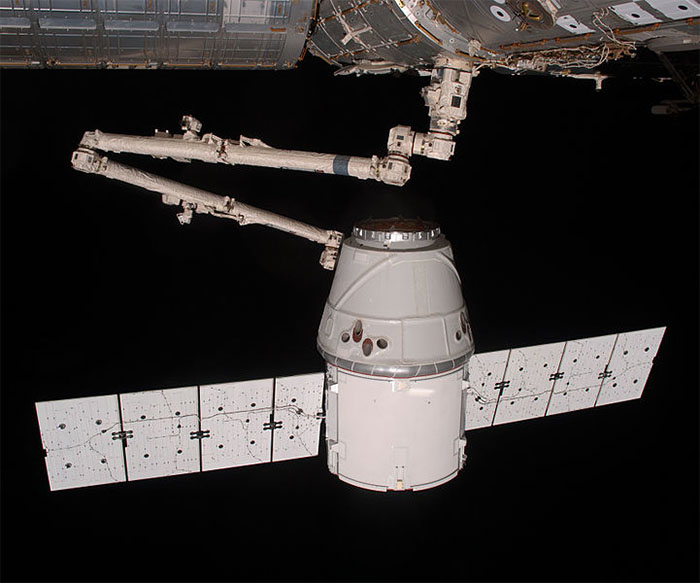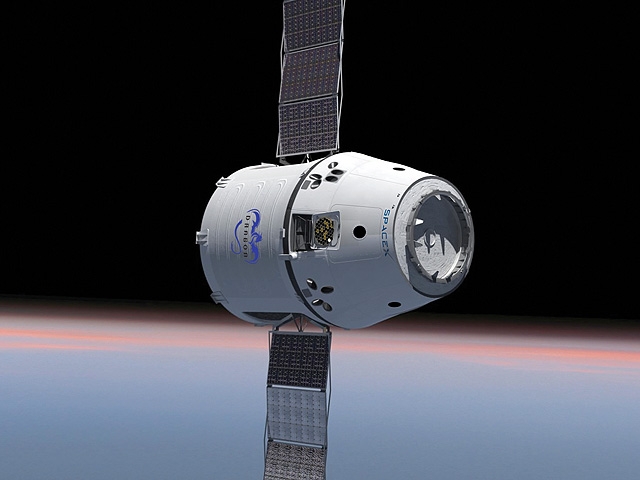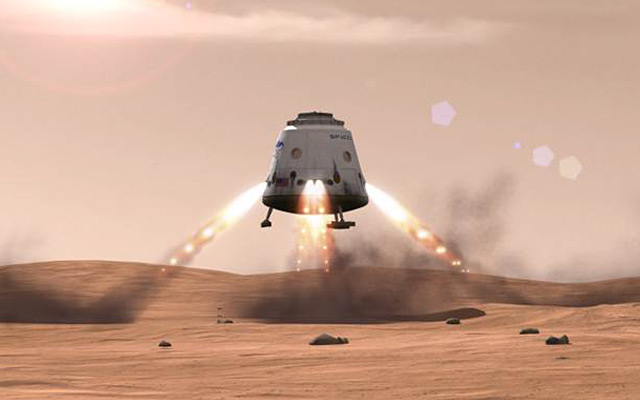In the last few days, United Launch Alliance, Armadillo, and SpaceX launched rockets, all three of which showed performance anomalies.
On Thursday, October 4, United Launch Alliance launched a US Air Force GPS satellite on a Delta IV rocket. The first stage functioned according to plan, but the second-stage RL-10 engine underperformed, producing less thrust than its nominal 24,750-pound thrust. The engine burned for a longer duration to compensate, and the payload achieved proper orbit.
On Saturday, October 6, Armadillo Aerospace launched its Stig-B rocket for the first time at Spaceport America in New Mexico. The mission goal was to demonstrate flight to 100 kilometers and successful recovery using the supersonic ballute (balloon-parachute) system. The target altitude was not achieved. After launch, software detected that the rocket had reached an abort limit and shut the engine down. The rocket was successfully recovered, analysis is underway, and another flight is expected within a few weeks.
On Sunday, October 7, SpaceX launched a Falcon 9 rocket carrying another Dragon capsule to the Internstional Space Station. Unlike the last Dragon flight, which was considered a test, this was officially an operational mission. About 1 minute 19 seconds into flight, one of the Merlin 1C first-stage engines failed, as can be seen in the following slow-motion video:
[youtube=http://www.youtube.com/watch?v=tRTYh71D9P0&w=700]
Based solely on the video, some observers have concluded that the event was a sudden catastrophic disassembly (i.e., engine explosion). At the moment, SpaceX is saying that it was an engine shutdown but has no further details. Update: SpaceX is now saying that the debris seen in the video is an aerodynamic fairing which ruptured when the engine shut down and lost pressure.
The Falcon 9 is designed to lose a first-stage engine, even explosively, and continue a mission. In the event of an explosion, shields protect neighboring engines from shrapnel damage. The Saturn V had a similar engine-out capability but was not designed to withstand an explosive failure.
If this this event was an explosion, it shows that the shrapnel shields work. Blowing an engine on a multi-engine rocket is similar to blowing a piston in an a piston-engine aircraft: a serious anomaly, but not necessarily fatal if the system is designed for it. During World War II, P-47 Thunderbolts would return to base with a lot of pistons shot out. In the jet era, the A-10 Thunderbolt II has been known to return to base with one engine shot away. The Falcon 9 was able to continue its mission, burning its remaining engines a bit long (like the Delta a few days earlier), and put its Dragon payload into an almost-perfect orbit. Perhaps SpaceX should have called the Falcon 9 the “Thunderbolt III.”
That having been said, Falcon 9 could not continue a mission after the failure of a second stage engine. (There’s only one.) So, this is a situation SpaceX will want to investigate.
Some critics will now say SpaceX cut too many corners and should have done more testing and analysis. Flight testing is always a good thing, and SpaceX is doing it right now. NASA may have classified this as an operational mission, but that doesn’t mean there’s no testing and analysis going on. Remember that the Space Shuttle was declared operational after only four missions, but NASA continued testing and tweaking throughout the 30-year program.
SpaceX could have done some additional flight tests, with dummy payloads, before starting cargo runs to ISS. That would have delayed payloads to ISS, cost NASA more money (those Russian Progress flights aren’t cheap anymore), and not resulted in any more test data than the actual cargo flights produce.
In the early days of rocketry, it was common to do a lot more test flights before committing to carrying cargo for paying customers. The economics of large expendable rockets changed that. That’s true for Boeing and Lockheed as much as SpaceX. The number of test flights is greatly reduced; to compensate, a lot more money is spent on analysis and systems engineering prior to the first test flight. All that analysis does not come cheap, however, and even the best analysis cannot uncover all the unknowns that crop up in flight.
If flight testing were cheaper and easier, vehicle developers could reduce the amount of systems analysis that’s required before first flight. That would reduce development time as well as development cost.
Optimizing rockets for cheap flight test would require a new design approach. What would a highly testable rocket look like?
A highly testable rocket would be cheap enough to fly often. It would require minimal preparation time, so flight tests could be scheduled quickly, when required. It would be recoverable after an anomaly, so engineers could examine the hardware to determine what happened rather than relying solely on telemetry data. It would be incrementally testable, allowing for low-altitude, low-speed flight tests early on, when systems are immature.
In other words, it would be a reusable rocket.
Nevertheless, the myth persists, in the aerospace industry, that reusable rockets are more expensive to develop. To quote the legendary late rocket engineer Max Hunter, “The people who say expendables are cheaper to develop forget that in order to develop a rocket, you have to fly a rocket.”
During the 1960’s, General Dynamics did an apples-to-apples comparison of a reusable rocket (the X-15) and an expendable rocket (the Atlas A) of similar size and performance. They found that the X-15 was more complex, but also more testable, more reliable, and cheaper to develop. The US Air Force performed a parallel study, using slightly different methods, and reached the same conclusion.
More recently, we have examples such as White Knight and SpaceShip One, a two-stage system developed for about $15 million. The development program included 66 flights of White Knight and 17 flights of SpaceShip One. By comparison, in 2011, NASA’s sounding rocket program had a budget of $45 million and conducted just 13 launches.
Rocket development, like other aspects of spaceflight, is highly immature. Jet engines and liquid-propellent rockets have been around for similar lengths of time, but the number of rocket engines that have flown is minuscule compared to the number of jet engines. So, it isn’t surprising that in-flight anomalies still occur quite often. The development of rocket engines has been arrested by decisions made back in the 1960’s, which led to 50 years of reliance on expendable rockets with trivial flight rates. Fortunately, that era is rapidly drawing to a close.







